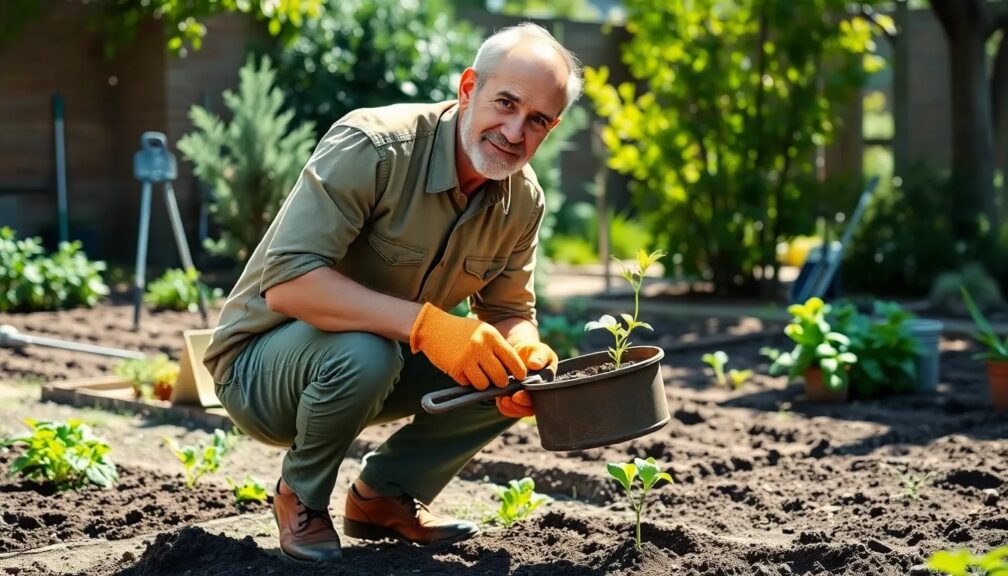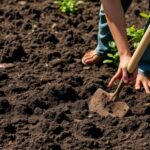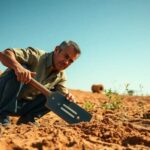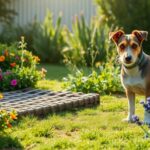Should you pack down soil when planting

Welcome to Our Guide on "Should You Pack Down Soil When Planting"
When planting, gardeners often face the decision of whether or not to pack down the soil. This seemingly simple action can have a significant impact on plant health and growth. Understanding the balance between soil aeration and compaction is essential for establishing strong root systems and ensuring your plants thrive. In this article, we will explore the benefits and drawbacks of soil compaction, provide insights on the appropriate techniques for different types of plants, and offer tips to help you make the right choice for your garden. Whether you're a seasoned gardener or a beginner, knowing when and how to pack down soil can make all the difference in your planting success.
Are you supposed to pack soil down?
The art of gardening is full of subtle techniques that can make or break your horticultural efforts. One such technique involves the packing of soil, a topic surrounded by varying opinions and practices. Many gardeners wonder about the proper way to prep their soil, and if their method could be the secret ingredient to a bountiful harvest or a blossoming flower bed.
Understanding the balance of soil compaction is crucial. It's akin to finding the Goldilocks zone – too loose, and your plants may not have the support they need; too tight, and you could stifle root growth and impede water drainage.
Here's a sneak peek into the world of soil packing:
1. Optimal seed contact: For seeds to germinate, they require good contact with the soil. A gentle press to the earth can be the difference between seeds that spring to life or those that remain dormant.
2. The risk of over-compaction: It's a delicate dance, but compressing soil excessively leads to a hard, impenetrable surface. The result? Roots struggling to find their way and water unable to percolate – a surefire recipe for plant stress.
3. The role of soil type: If you're working with clay soil, beware of the ease at which it can become too compact. On the flip side, sandy soils may require a bit more pressure to hold together.
Unlocking the mysteries of proper soil compaction could be the key to transforming your garden. But there's more to this story than just pressing down on the earth. Dive deeper to uncover the intricacies of soil preparation and ensure that your green space isn't just surviving, but thriving. The secret is out there, and it's just waiting for you to dig in.
Should you compact soil when planting?
Are you ready to unlock the secret to a thriving garden? The answer lies beneath the surface, where the delicate dance of soil compaction can determine the fate of your botanical endeavors. Before you plunge your spade into the earth and begin your planting journey, pause and consider the ground rules that could make or break your green paradise.
The act of compacting soil is often seen as a necessary step to ensure plant stability and upright growth. However, this common gardening practice may be silently sabotaging your plants. Overcompaction can lead to a dense, unyielding environment where roots struggle to penetrate, water fails to drain, and essential microorganisms are squeezed out of existence.
On the flip side, the compaction conundrum doesn't mean you should treat your soil like a delicate soufflé. A certain level of firmness is crucial to prevent excessive air pockets that can dry out roots and destabilize your plants. So, how do you strike the perfect balance?
1. Understand the texture of your soil; sandy or clay-heavy grounds have different needs.
2. Use the right tools to gauge compaction levels without guesswork.
3. Learn about the optimal compaction for diverse plant species, because one size does not fit all in the garden.
By mastering these techniques, you'll not only avoid the pitfalls of overcompaction but also optimize root growth, water retention, and nutrient uptake. This esoteric knowledge is a game-changer, transforming novice gardeners into sage horticulturists.
Get ready to delve deeper into the world of soil dynamics. Your journey to becoming the steward of a flourishing garden oasis begins with understanding the ground beneath your feet. Don't let compaction confusion stunt your garden's potential. Keep reading to unearth the techniques that will elevate your gardening prowess to celestial heights.
Should potting soil be packed or loose?
The secret to flourishing houseplants and vibrant gardens might just lie in the consistency of your potting soil. Imagine the roots of your plants trying to navigate through a dense jungle of compacted earth versus a light and airy substrate. The difference is monumental, impacting everything from water drainage to root growth and nutrient uptake.
When it comes to potting soil, the stakes are high, and the wrong choice can lead to stagnant growth or even the untimely demise of your beloved green companions. It's not just about the soil; it's about the life that soil supports. Are you giving your plants the foundation they need to thrive?
Consider this:
1. Compacted soil can suffocate roots, stunting growth and weakening plant structures.
2. Loose soil promotes adequate air circulation and water flow, which are critical for root health and nutrient absorption.
3. The balance between too tight and too loose is a delicate dance - one that could dictate the success of your indoor or outdoor gardening ventures.
Unlock the full potential of your green thumb by understanding the nuances behind the perfect potting soil texture. It's not just dirt; it's the lifeblood of your garden. Do you dare to discover the game-changing benefits of getting it just right? Stay tuned for the insights that could elevate your gardening game to new heights.
Should I tamp soil before seeding?
Unveiling the secrets behind a lush, verdant garden starts with understanding the art of soil preparation. The debate over whether to tamp soil before sowing the seeds is more than a mere gardening chore—it's a pivotal step that could very well determine the triumph or tribulation of your green paradise.
Discover why seasoned gardeners are often seen pressing the earth gently beneath their boots, their hands methodically compressing the soil. There's a fine line between the perfect seedbed and one that suffocates potential life. Tamping, done correctly, can lead to uniform seed depths, improved soil-to-seed contact, and consequently, a more even germination. But, cross the line into overzealous compaction, and you risk creating an impenetrable barrier that tender seedlings cannot breach.
Consider this: only the right amount of pressure can coax your seeds from dormancy into bountiful sprouts. And what's at stake? The very beauty and yield of your garden. Are you willing to gamble with the fruits of your labor, or will you master the technique that could unlock your garden's full potential?
Stay with us as we delve into the nuances of soil tamping. We will explore the optimal pressure needed, the best tools for the job, and the timing that could make all the difference. And if you think you know the ins and outs of this seemingly simple task, prepare to be surprised by the hidden benefits and potential pitfalls that we will uncover.
Your garden awaits, teeming with untapped life, just beneath the surface. Are you ready to nurture it into existence? Keep reading, and equip yourself with the knowledge to turn your gardening endeavors from a game of chance into a science of growth.
Should you pack down soil when planting vegetables
The secret to a bountiful vegetable garden lies beneath the surface, in the dark, mysterious world of soil composition and structure. It's a question that buzzes in the minds of many gardeners: To what extent should soil be compacted to create the optimal bed for thriving plants? The answer is nuanced, and understanding the balance might just be the key to unlocking unparalleled growth and harvest in your garden.
First, consider the delicate dance between air pockets and root growth. Overly compacted soil can suffocate roots, robbing them of the oxygen they crave. Yet, soil that's too loose may not provide the support and nutrient transfer that plants require. Striking the perfect chord between these extremes can be the difference between a flourishing garden and a faltering one.
But how do you achieve that perfect balance? The process involves a blend of art and science, a gentle touch, and a pinch of know-how. It starts with the introduction of organic matter—such as compost or peat moss—into your garden beds. This is the secret ingredient that can provide your soil with the structure and nutrients needed for success.
Next, the act of planting itself must be approached with a certain finesse. The devil is in the details, and the way you handle the soil around your seedlings could tip the scales. Should you gently tamp it down, or is a light touch enough? The stakes couldn't be higher; the lifeblood of your garden hangs in the balance.
If you want to uncover the transformative techniques that veteran gardeners swear by, if you're ready to delve into the wisdom that could elevate your vegetable garden to new heights, then you simply cannot afford to stop reading. Prepare to be enlightened as we explore the intricate dance of soil compaction and plant prosperity. This knowledge could be the missing puzzle piece to your gardening success story.
Consejo final: When planting, gently press down the soil around the base of the plant to remove air pockets, ensuring good root-to-soil contact, but avoid over-compacting as this can hinder water absorption and root growth. Wishing you success in your gardening endeavors!
 What is the best tool for breaking up clay soil
What is the best tool for breaking up clay soil Does wetting soil make it easier to dig
Does wetting soil make it easier to dig What is the easiest way to dig a hole in hard ground
What is the easiest way to dig a hole in hard ground How to keep rats away
How to keep rats away What are the tools used in gardening: Your essential guide
What are the tools used in gardening: Your essential guideIf you want to know more about similar articles like Should you pack down soil when planting you can visit category Gardening Tools.